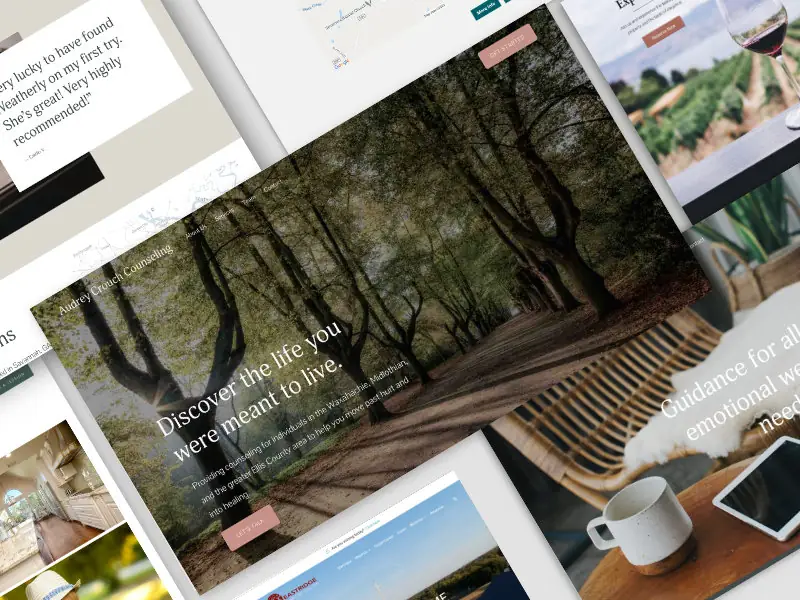Definition
The flex-shrink property in CSS specifies how much a flex item should shrink relative to the other items in the flex container when there is insufficient space. This property is part of the Flexible Box Layout (Flexbox) module and helps manage how items adjust when the container's size is smaller than the total size of its contents.
When should you use Flex Shrink?
You should use flex-shrink when you need to control how individual flex items reduce in size within a flex container.
It is particularly useful in responsive designs where elements need to adjust dynamically to fit the available space.
For example, you can use flex-shrink to ensure that less important items shrink more than critical ones, maintaining a better visual hierarchy.
How should you use Flex Shrink?
To use flex-shrink effectively, follow these steps:
- Set Up a Flex Container: Ensure the parent container has
display: flex to enable Flexbox behavior. - Apply the Property: Assign
flex-shrink values to individual items to control their shrinkage relative to others. The default value is 1. - Use Priority Values: Higher
flex-shrink values mean the item will shrink more, while a value of 0 prevents the item from shrinking. - Combine with Other Properties: Use
flex-shrink in conjunction with flex-grow and flex-basis for fine-tuned control over item sizing.
Example of flex-shrink in action:
<!DOCTYPE html>
<html lang="en">
<head>
<meta charset="UTF-8">
<meta name="viewport" content="width=device-width, initial-scale=1.0">
<title>Flex Shrink Example</title>
<style>
.container {
display: flex;
width: 300px;
border: 1px solid black;
}
.item {
flex-shrink: 1; /* Default shrink value */
padding: 10px;
border: 1px solid gray;
width: 150px;
}
.item.no-shrink {
flex-shrink: 0; /* This item won't shrink */
}
.item.double-shrink {
flex-shrink: 2; /* This item shrinks twice as much as others */
}
</style>
</head>
<body>
<div class="container">
<div class="item">Item 1</div>
<div class="item no-shrink">Item 2</div>
<div class="item double-shrink">Item 3</div>
</div>
</body>
</html>
What is a real-world example of Flex Shrink in action?
A real-world example of flex-shrink is a navigation bar with multiple items.
If the browser window is resized to be smaller, the flex-shrink property ensures that less important menu items shrink more or disappear first while keeping critical elements, like the logo or primary navigation links, intact.
What are some precautions to take when working with Flex Shrink?
When working with flex-shrink, consider the following precautions:
- Avoid Zero Shrinkage for All Items: If all items have
flex-shrink: 0, the container might overflow when there isn't enough space. - Use Logical Values: Assign
flex-shrink values thoughtfully to maintain a visual hierarchy and ensure usability. - Test Responsiveness: Check how the layout behaves across different screen sizes to prevent unintended visual issues.
- Consider Content Length: Items with long content might still overflow even with a higher
flex-shrink value, so plan for text wrapping or truncation if needed.
What are the advantages of using Flex Shrink?
- Dynamic Resizing: Automatically adjusts the size of flex items to fit the available space.
- Improved Responsiveness: Creates layouts that adapt seamlessly to different screen sizes and container widths.
- Maintains Hierarchy: Allows designers to prioritize which items shrink more or less based on importance.
- Efficient Space Management: Distributes shrinking proportionally, avoiding visual clutter or unnecessary white space.
What are the limitations of using Flex Shrink?
- Limited Control Over Overflow: Items may still overflow if their content exceeds the available space.
- Complexity with Other Properties: Requires careful coordination with
flex-grow and flex-basis for desired results. - Dependency on Parent Container: Only works within a flex container, so it cannot be used for general layout management outside of Flexbox.
What are common mistakes to avoid with Flex Shrink?
- Setting All Items to Zero: If all items have
flex-shrink: 0, the container cannot distribute space effectively, leading to overflow. - Ignoring Priority: Failing to prioritize item importance can lead to less critical elements dominating the available space.
- Not Testing Edge Cases: Ensure the layout behaves correctly in extreme scenarios, such as very small screen sizes or long content lengths.
- Overcomplicating Values: Avoid assigning unnecessarily high or inconsistent
flex-shrink values that make layouts harder to manage.
How does Flex Shrink compare to similar technologies or methods?
- Flex Shrink vs. Flex Grow: While
flex-shrink determines how items shrink when space is limited, flex-grow determines how items expand when there is extra space. - Flex Shrink vs. Min-Width: The
min-width property prevents items from shrinking below a certain size, while flex-shrink controls proportional shrinking. - Flex Shrink vs. Overflow: While
flex-shrink tries to prevent overflow by resizing items, the overflow property manages how content is displayed when it exceeds the container's size.
What are best practices for Flex Shrink?
- Combine with Flex Grow: Use both properties to balance how items expand and shrink for a harmonious layout.
- Prioritize Key Elements: Ensure important items have lower shrink values to maintain visibility and usability.
- Test for Accessibility: Check that shrinking elements do not compromise accessibility, such as hiding essential text or controls.
- Plan for Edge Cases: Design for scenarios with extreme resizing or unusual content lengths to maintain a polished appearance.
What resources are available for learning more about Flex Shrink?
- MDN Web Docs: Comprehensive documentation on the
flex-shrink property and its usage in CSS. - CSS-Tricks: Articles and tutorials explaining Flexbox properties, including
flex-shrink. - W3Schools: Examples and guides on using the
flex-shrink property effectively. - "CSS: The Definitive Guide" by Eric Meyer and Estelle Weyl: A detailed reference on CSS, including Flexbox.
- Flexbox Froggy: An interactive game for learning Flexbox properties like
flex-shrink in a fun and engaging way.
By understanding and applying the flex-shrink property, you can create responsive, dynamic layouts that adapt gracefully to various screen sizes and content requirements.



